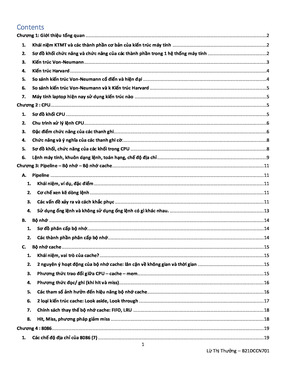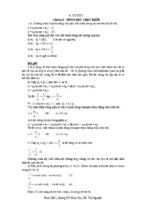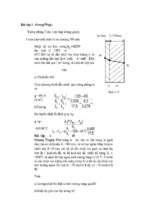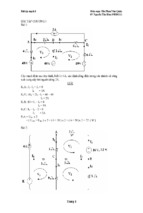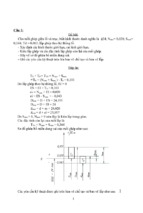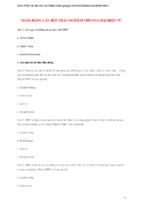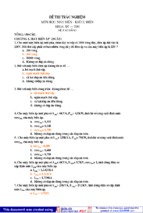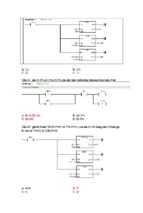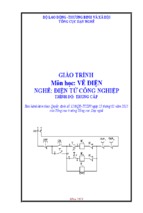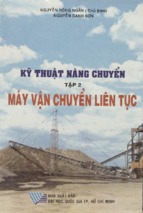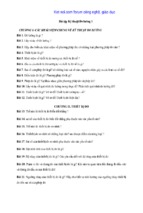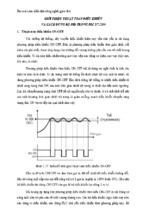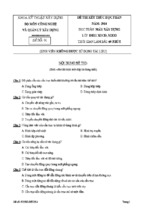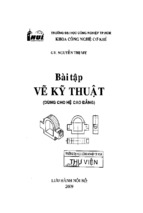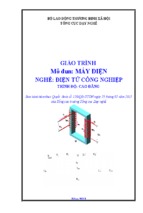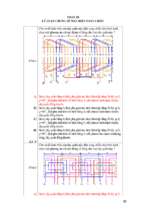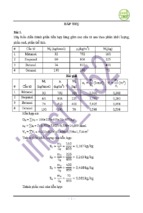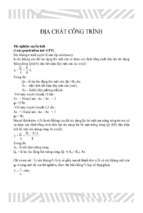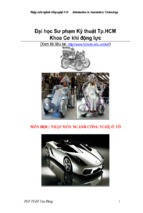ANTENNA THEORY
ANTENNA THEORY
ANALYSIS AND DESIGN
FOURTH EDITION
Constantine A. Balanis
Cover Image: Courtesy NASA/JPL-Caltech
Copyright © 2016 by John Wiley & Sons, Inc. All rights reserved
Published by John Wiley & Sons, Inc., Hoboken, New Jersey
Published simultaneously in Canada
No part of this publication may be reproduced, stored in a retrieval system, or transmitted in any form or by any means,
electronic, mechanical, photocopying, recording, scanning, or otherwise, except as permitted under Section 107 or 108 of
the 1976 United States Copyright Act, without either the prior written permission of the Publisher, or authorization through
payment of the appropriate per-copy fee to the Copyright Clearance Center, Inc., 222 Rosewood Drive, Danvers, MA
01923, (978) 750-8400, fax (978) 750-4470, or on the web at www.copyright.com. Requests to the Publisher for permission
should be addressed to the Permissions Department, John Wiley & Sons, Inc., 111 River Street, Hoboken, NJ 07030, (201)
748-6011, fax (201) 748-6008, or online at http://www.wiley.com/go/permission.
Limit of Liability/Disclaimer of Warranty: While the publisher and author have used their best efforts in preparing this
book, they make no representations or warranties with respect to the accuracy or completeness of the contents of this book
and specifically disclaim any implied warranties of merchantability or fitness for a particular purpose. No warranty may be
created or extended by sales representatives or written sales materials. The advice and strategies contained herein may not
be suitable for your situation. You should consult with a professional where appropriate. Neither the publisher nor author
shall be liable for any loss of profit or any other commercial damages, including but not limited to special, incidental,
consequential, or other damages.
For general information on our other products and services or for technical support, please contact our Customer Care
Department within the United States at (800) 762-2974, outside the United States at (317) 572-3993 or fax (317) 572-4002.
Wiley also publishes its books in a variety of electronic formats. Some content that appears in print may not be available in
electronic formats. For more information about Wiley products, visit our web site at www.wiley.com.
Library of Congress Cataloging-in-Publication Data:
Balanis, Constantine A., 1938–
Modern antenna handbook / Constantine A. Balanis.—4th ed.
p. cm.
Includes index.
ISBN 978-1-118-642060-1 (cloth)
1. Antennas (Electronics) I. Title.
TK7871.6.B354 2016
621.382′ 4—dc22
2016050162
Printed in the United States of America
10
9
8
7
6
5
4
3
2
1
To the memory of my parents, uncle and aunt
Στη μνήμη των γoνέων, τoυ θείoυ και τη𝜍 θεία𝜍 μoυ
Contents
Preface
xiii
About the Companion Website
xix
1
Antennas
1.1
1.2
1.3
1.4
1.5
1.6
2
Introduction
Types of Antennas
Radiation Mechanism
Current Distribution on a Thin Wire Antenna
Historical Advancement
Multimedia
References
Fundamental Parameters and Figures-of-Merit of Antennas
2.1
2.2
2.3
2.4
2.5
2.6
2.7
2.8
2.9
2.10
2.11
2.12
2.13
2.14
2.15
2.16
2.17
2.18
2.19
Introduction
Radiation Pattern
Radiation Power Density
Radiation Intensity
Beamwidth
Directivity
Numerical Techniques
Antenna Efficiency
Gain, Realized Gain
Beam Efficiency
Bandwidth
Polarization
Input Impedance
Antenna Radiation Efficiency
Antenna Vector Effective Length and Equivalent Areas
Maximum Directivity and Maximum Effective Area
Friis Transmission Equation and Radar Range Equation
Antenna Temperature
Multimedia
References
Problems
1
1
3
7
15
18
21
22
25
25
25
35
37
40
41
55
60
61
65
65
66
75
79
81
86
88
96
100
103
105
vii
viii
CONTENTS
3 Radiation Integrals and Auxiliary Potential Functions
3.1
3.2
3.3
3.4
3.5
3.6
3.7
3.8
Introduction
The Vector Potential A for an Electric Current Source J
The Vector Potential F for A Magnetic Current Source M
Electric and Magnetic Fields for Electric (J) and Magnetic (M) Current
Sources
Solution of the Inhomogeneous Vector Potential Wave Equation
Far-Field Radiation
Duality Theorem
Reciprocity and Reaction Theorems
References
Problems
4 Linear Wire Antennas
Introduction
Infinitesimal Dipole
Small Dipole
Region Separation
Finite Length Dipole
Half-Wavelength Dipole
Linear Elements Near or On Infinite Perfect Electric Conductors (PEC), Perfect
Magnetic Conductors (PMC) and Electromagnetic Band-Gap (EBG) Surfaces
4.8 Ground Effects
4.9 Computer Codes
4.10 Multimedia
References
Problems
4.1
4.2
4.3
4.4
4.5
4.6
4.7
5 Loop Antennas
5.1
5.2
5.3
5.4
5.5
5.6
5.7
5.8
5.9
Introduction
Small Circular Loop
Circular Loop of Constant Current
Circular Loop with Nonuniform Current
Ground and Earth Curvature Effects for Circular Loops
Polygonal Loop Antennas
Ferrite Loop
Mobile Communication Systems Applications
Multimedia
References
Problems
6 Arrays: Linear, Planar, and Circular
6.1
6.2
6.3
6.4
6.5
6.6
6.7
Introduction
Two-Element Array
N-Element Linear Array: Uniform Amplitude and Spacing
N-Element Linear Array: Directivity
Design Procedure
N-Element Linear Array: Three-Dimensional Characteristics
Rectangular-to-Polar Graphical Solution
127
127
128
130
131
132
136
137
138
143
143
145
145
145
155
158
164
176
179
203
216
216
218
220
235
235
236
250
259
268
269
270
272
272
275
277
285
285
286
293
312
318
319
322
CONTENTS
6.8
6.9
6.10
6.11
6.12
6.13
7
Antenna Synthesis and Continuous Sources
7.1
7.2
7.3
7.4
7.5
7.6
7.7
7.8
7.9
7.10
7.11
8
Introduction
Continuous Sources
Schelkunoff Polynomial Method
Fourier Transform Method
Woodward-Lawson Method
Taylor Line-Source (Tschebyscheff-Error)
Taylor Line-Source (One-Parameter)
Triangular, Cosine, and Cosine-Squared Amplitude Distributions
Line-Source Phase Distributions
Continuous Aperture Sources
Multimedia
References
Problems
Integral Equations, Moment Method, and Self and Mutual Impedances
8.1
8.2
8.3
8.4
8.5
8.6
8.7
8.8
9
N-Element Linear Array: Uniform Spacing, Nonuniform Amplitude
Superdirectivity
Planar Array
Design Considerations
Circular Array
Multimedia
References
Problems
Introduction
Integral Equation Method
Finite Diameter Wires
Moment Method Solution
Self-Impedance
Mutual Impedance Between Linear Elements
Mutual Coupling in Arrays
Multimedia
References
Problems
Broadband Dipoles and Matching Techniques
9.1
9.2
9.3
9.4
9.5
9.6
9.7
9.8
9.9
Introduction
Biconical Antenna
Triangular Sheet, Flexible and Conformal Bow-Tie, and Wire Simulation
Vivaldi Antenna
Cylindrical Dipole
Folded Dipole
Discone and Conical Skirt Monopole
Matching Techniques
Multimedia
References
Problems
ix
323
345
348
360
363
367
367
368
385
385
386
387
392
398
404
408
415
416
417
420
420
421
431
431
432
439
448
455
463
474
480
480
482
485
485
487
492
496
500
505
512
513
523
524
525
x
10
CONTENTS
Traveling Wave and Broadband Antennas
10.1
10.2
10.3
10.4
11
Frequency Independent Antennas, Antenna Miniaturization, and
Fractal Antennas
11.1
11.2
11.3
11.4
11.5
11.6
11.7
11.8
12
Introduction
Theory
Equiangular Spiral Antennas
Log-Periodic Antennas
Fundamental Limits of Electrically Small Antennas
Antenna Miniaturization
Fractal Antennas
Multimedia
References
Problems
Aperture Antennas
12.1
12.2
12.3
12.4
12.5
12.6
12.7
12.8
12.9
12.10
12.11
13
Introduction
Traveling Wave Antennas
Broadband Antennas
Multimedia
References
Problems
Introduction
Field Equivalence Principle: Huygens’ Principle
Radiation Equations
Directivity
Rectangular Apertures
Circular Apertures
Design Considerations
Babinet’s Principle
Fourier Transforms in Aperture Antenna Theory
Ground Plane Edge Effects: The Geometrical Theory of Diffraction
Multimedia
References
Problems
Horn Antennas
13.1
13.2
13.3
13.4
13.5
13.6
13.7
13.8
13.9
13.10
13.11
Introduction
E-Plane Sectoral Horn
H-Plane Sectoral Horn
Pyramidal Horn
Conical Horn
Corrugated Horn
Aperture-Matched Horns
Multimode Horns
Dielectric-Loaded Horns
Phase Center
Multimedia
References
Problems
533
533
533
549
580
580
582
591
591
592
593
598
614
619
627
633
633
635
639
639
639
645
648
648
667
675
680
684
702
707
707
709
719
719
719
733
743
756
761
766
769
771
773
774
775
778
CONTENTS
14
Microstrip and Mobile Communications Antennas
14.1
14.2
14.3
14.4
14.5
14.6
14.7
14.8
14.9
14.10
14.11
15
Reflector Antennas
15.1
15.2
15.3
15.4
15.5
15.6
16
Introduction
Rectangular Patch
Circular Patch
Quality Factor, Bandwidth, and Efficiency
Input Impedance
Coupling
Circular Polarization
Arrays and Feed Networks
Antennas for Mobile Communications
Dielectric Resonator Antennas
Multimedia
References
Problems
Introduction
Plane Reflector
Corner Reflector
Parabolic Reflector
Spherical Reflector
Multimedia
References
Problems
783
783
788
815
823
826
827
830
832
837
847
858
862
867
875
875
875
876
884
920
923
923
925
Smart Antennas
931
Introduction
Smart-Antenna Analogy
Cellular Radio Systems Evolution
Signal Propagation
Smart Antennas’ Benefits
Smart Antennas’ Drawbacks
Antenna
Antenna Beamforming
Mobile Ad hoc Networks (MANETs)
Smart-Antenna System Design, Simulation, and Results
Beamforming, Diversity Combining, Rayleigh-Fading, and Trellis-Coded
Modulation
16.12 Other Geometries
16.13 Multimedia
References
Problems
931
931
933
939
942
943
943
946
960
964
972
975
976
976
980
Antenna Measurements
981
16.1
16.2
16.3
16.4
16.5
16.6
16.7
16.8
16.9
16.10
16.11
17
xi
17.1
17.2
17.3
17.4
17.5
Introduction
Antenna Ranges
Radiation Patterns
Gain Measurements
Directivity Measurements
981
982
1000
1003
1010
xii
CONTENTS
17.6
17.7
17.8
17.9
17.10
Radiation Efficiency
Impedance Measurements
Current Measurements
Polarization Measurements
Scale Model Measurements
References
sin(x)
x
| sin(Nx) |
| N = 1, 3, 5, 10, 20
Appendix II: f N (x) = ||
|
| N sin(x) |
Appendix I: f (x) =
1012
1012
1014
1014
1019
1024
1027
1029
Appendix III: Cosine and Sine Integrals
1031
Appendix IV: Fresnel Integrals
1033
Appendix V: Bessel Functions
1035
Appendix VI: Identities
1041
Appendix VII: Vector Analysis
1045
Appendix VIII: Method of Stationary Phase
1055
Appendix IX: Television, Radio, Telephone, and Radar Frequency Spectrums
1061
Index
1065
Preface
The fourth edition of Antenna Theory is designed to meet the needs of electrical engineering and
physics students at the senior undergraduate and beginning graduate levels, and those of practicing
engineers. The text presumes that the students have knowledge of basic undergraduate electromagnetic theory, including Maxwell’s equations and the wave equation, introductory physics, and differential and integral calculus. Mathematical techniques required for understanding some advanced
topics in the later chapters are incorporated in the individual chapters or are included as appendices.
The book, since its first edition in 1982 and subsequent two editions in 1997 and 2005, has been
a pacesetter and trail blazer in updating the contents to keep abreast with advancements in antenna
technology. This has been accomplished by:
r Introducing new topics
r Originating innovative features and multimedia to animate, visualize, illustrate and display
radiation characteristics
r Providing design equations, procedures and associate software
This edition is no exception, as many new topics and features have been added. In particular:
r New sections have been introduced on:
r
r
r
r
1. Flexible and conformal bowtie
2. Vivaldi antenna
3. Antenna miniaturization
4. Antennas for mobile communications
5. Dielectric resonator antennas
6. Scale modeling
Additional MATLAB and JAVA programs have been developed.
Color and gray scale figures and illustrations have been developed to clearly display and visualize antenna radiation characteristics.
A companion website has been structured by the publisher which houses the MATLAB programs, JAVA-based applets and animations, Power Point notes, and JAVA-based interactive
questionnaires. A solutions manual is available only for the instructors that adopt the book as
a classroom text.
Over 100 additional end-of-chapter problems have been included.
While incorporating the above new topics and features in the current edition, the book maintained
all of the attractive features of the first three additions, especially the:
r Three-dimensional graphs to display the radiation characteristics of antennas. This feature was
hailed, at the time of its introduction, as innovative and first of its kind addition in a textbook
on antennas.
xiii
xiv
PREFACE
r Advanced topics, such as a chapter on Smart Antennas and a section on Fractal Antennas.
r Multimedia:
1.
2.
3.
4.
5.
6.
Power Point notes
MATLAB programs
FORTRAN programs
JAVA-based animations
JAVA-based applets
JAVA-based end-of-the-chapter questionnaires
The book’s main objective is to introduce, in a unified manner, the fundamental principles of antenna
theory and to apply them to the analysis, design, and measurements of antennas. Because there are so
many methods of analysis and design and a plethora of antenna structures, applications are made to
some of the most basic and practical configurations, such as linear dipoles; loops; arrays; broadband,
and frequency-independent antennas; aperture antennas; horn antennas; microstrip antennas; and
reflector antennas.
A tutorial chapter on Smart Antennas is included to introduce the student in a technology that
will advance antenna theory and design, and revolutionize wireless communications. It is based
on antenna theory, digital signal processing, networks and communications. MATLAB simulation
software has also been included, as well as a plethora of references for additional reading.
Introductory material on analytical methods, such as the Moment Method and Fourier transform
(spectral) technique, is also included. These techniques, together with the fundamental principles
of antenna theory, can be used to analyze and design almost any antenna configuration. A chapter
on antenna measurements introduces state-of-the-art methods used in the measurements of the most
basic antenna characteristics (pattern, gain, directivity, radiation efficiency, impedance, current, and
polarization) and updates progress made in antenna instrumentation, antenna range design, and scale
modeling. Techniques and systems used in near- to far-field measurements and transformations are
also discussed.
A sufficient number of topics have been covered, some for the first time in an undergraduate text,
so that the book will serve not only as a text but also as a reference for the practicing and design
engineer and even the amateur radio buff. These include design procedures, and associated computer
programs, for Yagi–Uda and log-periodic arrays, horns, and microstrip patches; synthesis techniques
using the Schelkunoff, Fourier transform, Woodward–Lawson, Tschebyscheff, and Taylor methods; radiation characteristics of corrugated, aperture-matched, and multimode horns; analysis and
design of rectangular and circular microstrip patches; and matching techniques such as the binomial
and Tschebyscheff. Also new sections have been introduced on flexible & conformal bowtie and
Vivaldi antennas in Chapter 9, antenna miniaturization in Chapter 11 and expanded scale modeling in
Chapter 17.
Chapter 14 has been expanded to include antennas for Mobile Communications. In particular,
this new section includes basic concepts and design equations for the Planar Inverted-F Antenna
(PIFA), Slot Antenna, Inverted-F Antenna (IFA), Multiband U-type Slot Antenna, and Dielectric
Resonator Antennas (DRAs). These are popular internal antennas for mobile devices (smart phones,
laptops, pads, tablets, etc.). A MATLAB computer program, referred to as DRA Analysis Design,
has been developed to analyze the resonant frequencies of Rectangular, Cylindrical, Hemicylindrical, and Hemispherical DRAs using TE and TM modal cavity techniques by modeling the walls as
PMCs. Hybrid modes are used to analyze and determine the resonant frequencies and quality factor (Q) of the Cylindrical DRA. The MATLAB program DRA Analysis Design has the capability,
using a nonlinear solver, to design (i.e., find the Q, range of values for the dielectric constant, and
finally the dimensions of the Cylindrical DRA) once the hybrid mode (TE01𝛿 , TM01𝛿 or HE11𝛿 ), fractional bandwidth (BW, in %), VSWR and resonant frequency (fr , in GHz) are specified. A detailed
procedure to follow the design is outlined in Section 14.10.4.
PREFACE
xv
The text contains sufficient mathematical detail to enable the average undergraduate electrical
engineering and physics students to follow, without difficulty, the flow of analysis and design. A
certain amount of analytical detail, rigor, and thoroughness allows many of the topics to be traced
to their origin. My experiences as a student, engineer, and teacher have shown that a text for this
course must not be a book of unrelated formulas, and it must not resemble a “cookbook.” This book
begins with the most elementary material, develops underlying concepts needed for sequential topics,
and progresses to more advanced methods and system configurations. Each chapter is subdivided
into sections or subsections whose individual headings clearly identify the antenna characteristic(s)
discussed, examined, or illustrated.
A distinguished feature of this book is its three-dimensional graphical illustrations from the first
edition, which have been expanded and supplemented in the second, third and fourth editions. In
the past, antenna texts have displayed the three-dimensional energy radiated by an antenna by a
number of separate two-dimensional patterns. With the advent and revolutionary advances in digital computations and graphical displays, an additional dimension has been introduced for the first
time in an undergraduate antenna text by displaying the radiated energy of a given radiator by a
single three-dimensional graphical illustration. Such an image, formed by the graphical capabilities
of the computer and available at most computational facilities, gives a clear view of the energy radiated in all space surrounding the antenna. In this fourth edition, almost all of the three-dimensional
amplitude radiation patterns, along with many two-dimensional graphs, are depicted in color and
gray-scale. This is a new and pacesetting feature adopted, on a large scale, in this edition. It is hoped
that this will lead to a better understanding of the underlying principles of radiation and provide a
clearer visualization of the pattern formation in all space.
In addition, there is an abundance of general graphical illustrations, design data, references, and an
expanded list of end-of-the chapter problems. Many of the principles are illustrated with examples,
graphical illustrations, and physical arguments. Although students are often convinced that they
understand the principles, difficulties arise when they attempt to use them. An example, especially
a graphical illustration, can often better illuminate those principles. As they say, “a picture is worth
a thousand words.”
Numerical techniques and computer solutions are illustrated and encouraged. A number of
MATLAB computer programs are included in the publisher’s website for the book. Each program
is interactive and prompts the user to enter the data in a sequential manner. Some of these programs
are translations of the FORTRAN ones that were included in the first and second editions. However,
many new ones have been developed. Every chapter, other than Chapters 3 and 17, has at least one
MATLAB computer program; some have as many as four. The outputs of the MATLAB programs
include graphical illustrations and tabulated results. For completeness, the FORTRAN computer
programs are also included, although nowdays there is not as much interest in them. The computer
programs can be used for analysis and design. Some of them are more of the design type while some
of the others are of the analysis type. Associated with each program there is a READ ME file, which
summarizes the respective program.
The purpose of the Power Point Lecture Notes is to provide the instructors a copy of the text figures
and some of the most important equations of each chapter. They can be used by the instructors in
their lectures but may be supplemented with additional narratives. The students can use them to
listen to the instructors’ lectures, without having to take detailed notes, but can supplement them in
the margins with annotations from the lectures. Each instructor will use the notes in a different way.
The Interactive Questionnaires are intended as reviews of the material in each chapter. The student
can use them to review for tests, exams, and so on. For each question, there are three possible answers,
but only one is correct. If the reader chooses one of them and it the correct answer, it will so indicate.
However, if the chosen answer is the wrong one, the program will automatically indicate the correct
answer. An explanation button is provided, which gives a short narrative on the correct answer or
indicates where in the book the correct answer can be found.
xvi
PREFACE
The Animations can be used to illustrate some of the radiation characteristics, such as amplitude
patterns, of some antenna types, like line sources, dipoles, loops, arrays, and horns. The Applets cover
more chapters and can be used to examine some of the radiation characteristics (such as amplitude
patterns, impedance, bandwidth, etc.) of some of the antennas. This can be accomplished very rapidly
without having to resort to the MATLAB programs, which are more detailed.
For course use, the text is intended primarily for a two-semester (or two- or three-quarter)
sequence in antenna theory. The first course should be given at the senior undergraduate level, and
should cover most of the material in Chapters 1 through 7, and some sections of Chapters 14, 16 and
17. The material in Chapters 8 through 16 should be covered in detail in a beginning graduate-level
course. Selected chapters and sections from the book can be covered in a single semester, without
loss of continuity. However, it is essential that most of the material in Chapters 2 through 6 be covered in the first course and before proceeding to any more advanced topics. To cover all the material
of the text in the proposed time frame would be, in some cases, an ambitious and challenging task.
Sufficient topics have been included, however, to make the text complete and to give the teacher
the flexibility to emphasize, deemphasize, or omit sections or chapters. Some of the chapters and
sections can be omitted without loss of continuity.
In the entire book, an ej𝜔t time variation is assumed, and it is suppressed. The International System of Units, which is an expanded form of the rationalized MKS system, is used in the text. In
some cases, the units of length are in meters (or centimeters) and in feet (or inches). Numbers in
parentheses () refer to equations, whereas those in brackets [] refer to references. For emphasis, the
most important equations, once they are derived, are boxed. In some of the basic chapters, the most
important equations are summarized in tables.
I will like to acknowledge the invaluable suggestions from all those that contributed to the first
three additions of the book, too numerous to mention here. Their names and contributions are stated
in the respective editions. It is my pleasure to acknowledge the suggestions of the reviewers for
the fourth edition: Dr. Stuart A. Long of the University of Houston, Dr. Leo Kempel of Michigan
State University, and Dr. Cynthia M. Furse of the University of Utah. There have been other contributors to this edition, and their contributions are valued and acknowledged. Many graduate and
undergraduate students at Arizona State University have written and verified most of the MATLAB
computer programs; some of these programs were translated from FORTRAN, which appeared in
the first three editions and updated for the fourth edition. However some new MATLAB and JAVA
programs have been created, which are included for the first time in the fourth edition. I am indebted
to Dr. Alix Rivera-Albino who developed with special care all of the color and gray scale figures
and illustrations for the fourth edition and contributed to the manuscript and figures for the Vivaldi
and mobile antennas. The author also acknowledges Dr. Razib S. Shishir of Intel, formerly of Arizona State University, for the JAVA-based software for the third edition, including the Interactive
Questionnaires, Applets and Animations. These have been supplemented with additional ones for
the fourth edition. Many thanks to Dr. Stuart A. Long, from the University of Houston, for reviewing the section on DRAs and Dr. Christos Christodoulou, from the University of New Mexico, for
reviewing the manuscript on antennas for mobile devices, Dr. Peter J. Bevelacqua of Google for material related to planar antennas for mobile units, Dr. Arnold Mckinley of University College London
(formerly with the Australian National University) for information and computer program related
to nonuniform loop antennas, Dr. Steven R. Best of Mitre Corporation for figures on the folded
spherical helix, Dr. Edward J. Rothwell, from Michigan State University, for antenna miniaturization information, Dr. Seong-Ook Park of the Korea Advanced Institute of Science and Technology
(KAIST), for the photo and permission of the U-slot antenna, and Dr. Yahia Antar and Dr. Jawad
Y. Siddiqui, both from the Royal Military College of Canada, for information related to cylindrical DRAs. I would also like to thank Craig R. Birtcher, and my graduate students Dr. Ahmet C.
Durgun (now with Intel), Dr. Nafati Aboserwal (now at the University of Oklahoma), Sivaseetharaman Pandi, Mikal Askarian Amiri, Wengang Chen, Saud Saeed and Anuj Modi, all of Arizona State
University, for proofreading of the manuscript and many other contributions to the fourth edition.
PREFACE
xvii
Special thanks to the companies that contributed photos, illustrations and copyright permissions for
the third edition. However, other companies, Samsung, Microsoft and HTC have provided updated
photos of their respective smart phones for the fourth edition.
During my 50+ year professional career, I have made many friends and professional colleagues.
The list is too long to be included here, as I fear that I may omit someone. Thank you for your friendship, collegiality and comradery. I will like to recognize George C. Barber, Dennis DeCarlo and the
entire membership (members, government agencies and companies) of the Advanced Helicopter
Electromagnetics (AHE) Program for the 25 years of interest and support. It has been an unprecedented professional partnership and collaboration. To all my teachers and mentors, thank you. You
have been my role models and inspiration.
This journey got started in the middle to the late 1970s, at the early stages of my academic career.
Many may speculate why I have chosen to remain as the sole author and steward for so many years,
dating back to first edition in 1982 and then through the subsequent three editions of this book and
two editions of the Advanced Engineering Electromagnetics book. I wanted, as long as I was able to
accomplish the tasks, to have the books manifest my own fingerprint and reflect my personal philosophy, methodology and pedagogy. Also I wanted the manuscript to display continuity and consistency,
and to control my own destiny, in terms of material to be included and excluded, revisions, deadlines
and timelines. Finally, I wanted to be responsible for the contents of the book. In the words of Frank
Sinatra, ‘I did it my way.’ Each edition presented its own challenges, but each time I cherished and
looked forward to the mission and venture.
I am also grateful to the staff of John Wiley & Sons, Inc., especially Brett Kurzman, Editor, Alex
Castro, Editorial Assistant, and Danielle LaCourciere, Production Editor for this edition. Special
thanks to Shikha Sharma, from Aptara, Inc., for supervising the typesetting of the book. Finally
I must pay tribute and homage to my family (Helen, Renie, Stephanie, Bill, Pete and Ellie) for
their unconditional support, patience, sacrifice, and understanding for the many years of neglect
during the completion of all four editions of this book and two editions of the Advanced Engineering
Electromagnetics. Each edition has been a pleasant experience although a daunting task.
Constantine A. Balanis
Arizona State University
Tempe, AZ
- Xem thêm -

